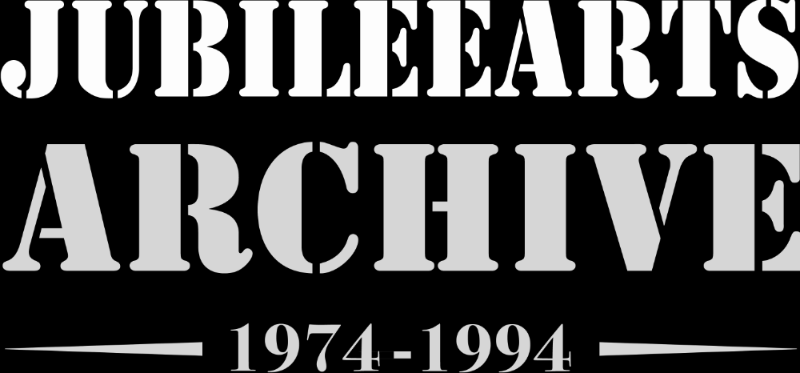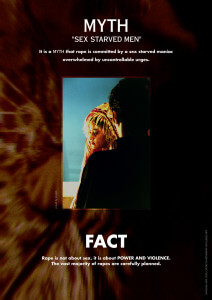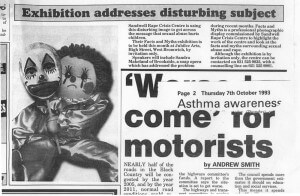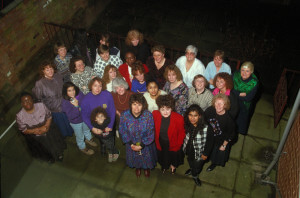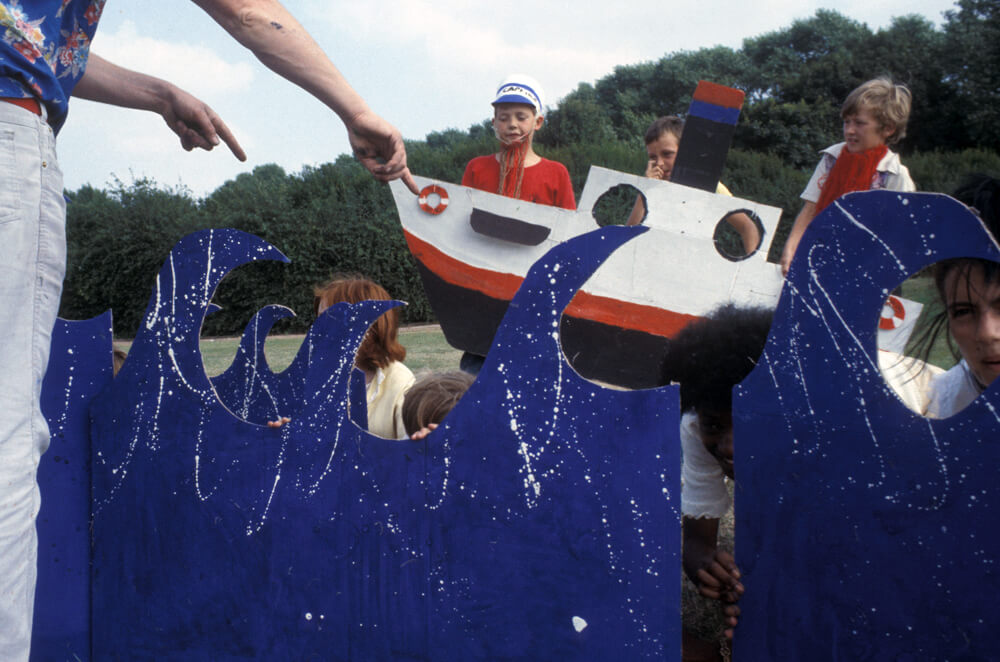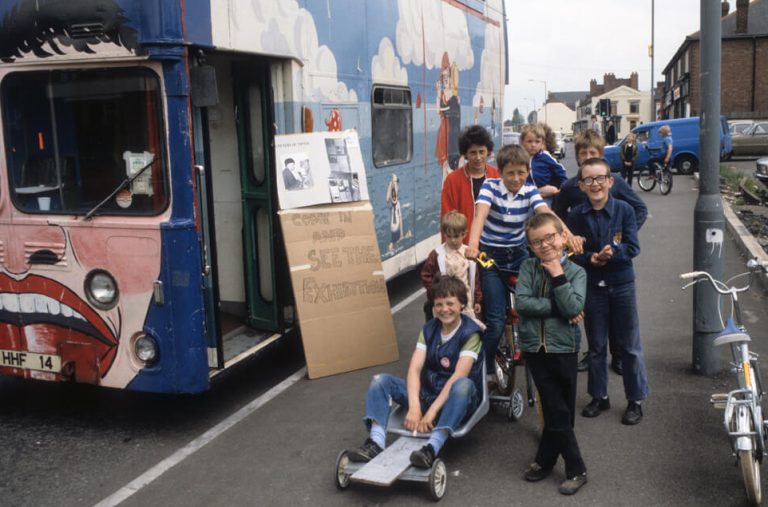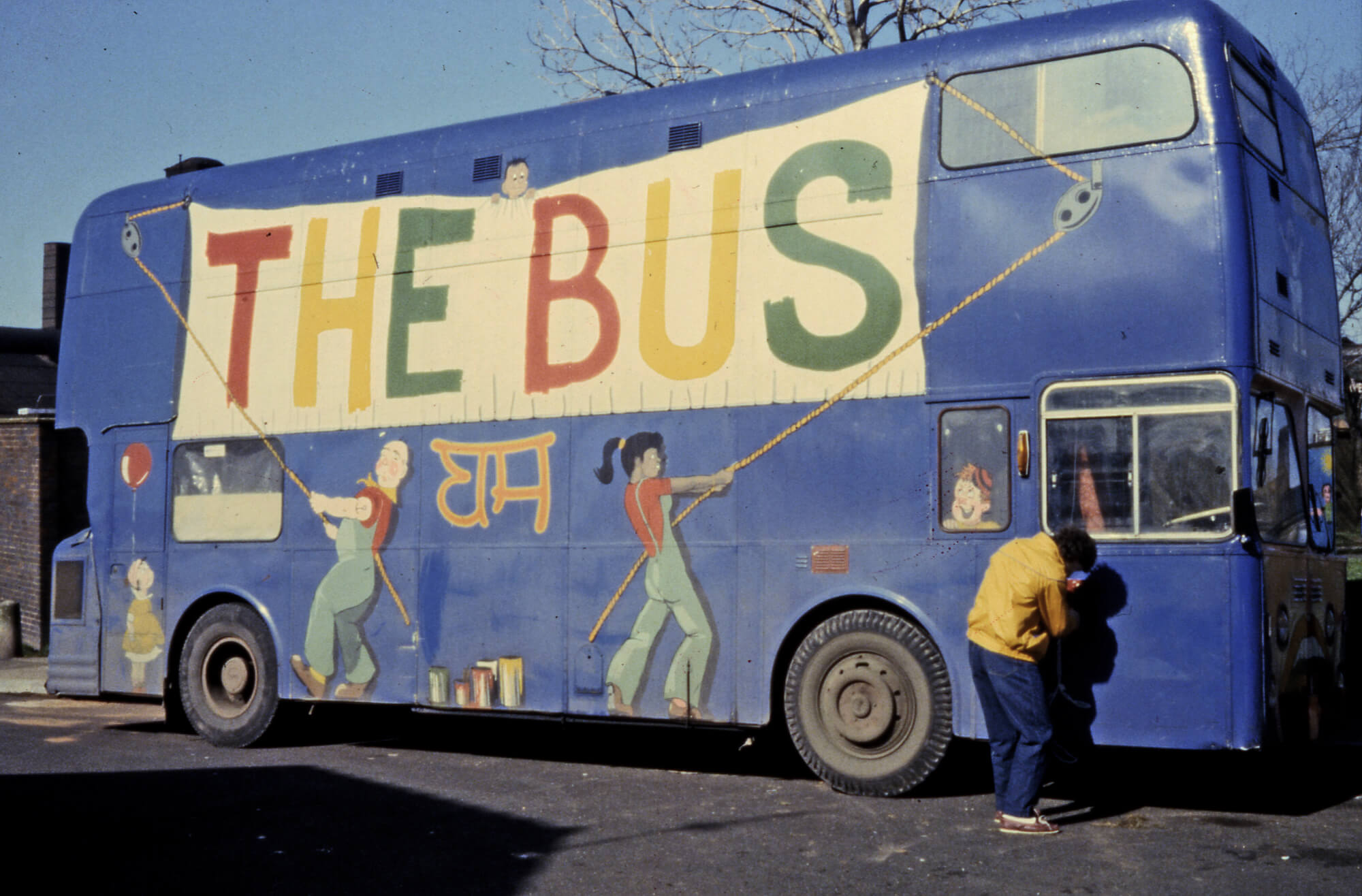At the beginning of the 1990s, Jubilee was a relatively stable organisation, with good revenue streams and diverse clients for projects, so it was never solely reliant on the support of the Arts Council or of the local authority. Revenue subsidy from Sandwell Council in 1992-93 amounted to £128,000. Jubilee was proud of the statement: ‘For every £1 you invest in the company we can bring in another £2.’ And they did, year on year.
To put it in context though, in 1992 Jubilee’s total, annual public funding was equivalent to: – the amount of subsidy given to tobacco growers by the European Community every 25 minutes or every working day or the cost of 3 performances at the Royal Opera House. Jubilee’s grant from Sandwell Council would have paid for just 5 metres for the Black Country Spine Road, being built at that time.
They had recently moved back into a refurbished building on the High Street of West Bromwich (having raising £250,000 to do so). The new building had exhibition and workshop spaces; a recording studio; a video edit suite; photographic darkroom; desk-top publishing; and something called interactive, multimedia information technology. Only the basic principles were still intact: ‘the conviction that the creation of original work, rooted in local cultures, local experience and aspirations, has a potency and a resonance that can re-shape our perceptions of what is valuable and what may be possible.’
To reopen the building they had produced an exhibition to celebrate their 18th birthday as an organisation –an A-Z of Jubilee, which looked back on the work. It ran for three months and drew visitors regionally and nationally.
Everything was going well, to plan you might say. The organisation had begun writing three year business plans, a practice they started in 1990 (a habit picked up from arts consultants Adams & Goldbard), well in advance of any funders requirements for such things (at that time, organisations were only asked to submit a year plan with budgets). Looking ahead, at future programmes some of the workers felt that though the company’s work generally received plaudits, the programme felt a little safe, there was little controversy – shouldn’t they be doing something a bit more edgy? The company had been receiving some strange requests. They were once invited to build a giant flying saucer (out of cardboard, naturally) to deliver civic dignatories to the opening of a new hamburger franchise in West Bromwich. They declined. That kind of thing was not exactly going out on a limb.
But the work of Jubilee was not to the taste of everyone. In May 1991, a local poll tax payer went on hunger strike outside of West Bromwich Town Hall, protesting about money being wasted on the arts in general and Jubilee in particular. Some members of the company went down to see him but he purportedly told them he couldn’t stop and talk – he had to get home, the wife’d kill him if he was late for his dinner. He was only on hunger strike while outside the Town Hall. He did however favour spending money on bringing something like the Royal Shakespeare Company to Sandwell, as a good example of value for money. The Council stated there were no plans for the Sandwell Show to be cut or to book the RSC for one night.
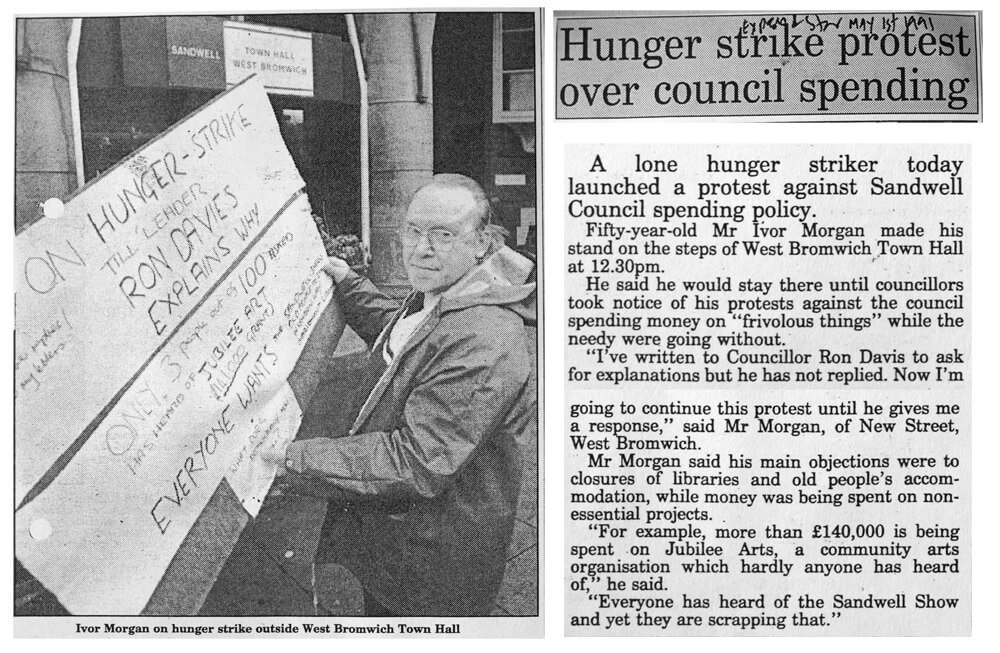
Jubilee was soon to become involved which two projects which stirred up the requisite controversy and generated headlines; one was a commission from the Health Authority dealing with HIV/AIDS and the other was the project ‘Facts & Myths’, made with a local rape crisis centre.
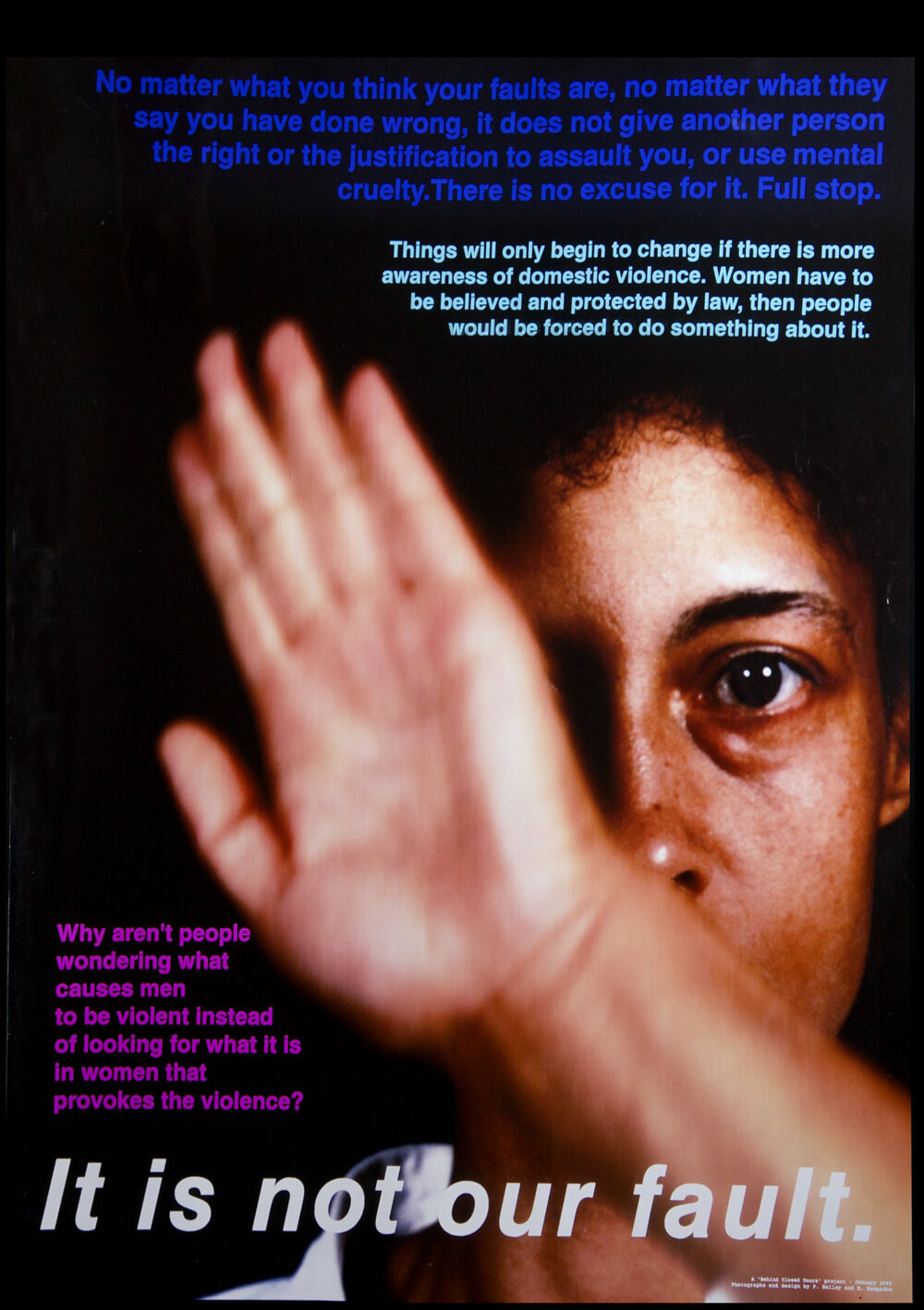
One of the co-ordinators from Sandwell Rape Crisis Centre (which had opened in 1991) had been involved with the steering group for the project ‘My Mother, My Daughter, Myself’. With funding from the Urban Aid Programme and local authority mainstream support, they were about to relocate to a new centre, staffed by two paid workers and a voluntary management committee, a service run by women for women. They provided telephone and face-to-face counselling, as well as training education and consultancy for other agencies in the statutory and voluntary sector, dealing with these issues of abuse and domestic violence. With the new centre they were looking to recruit volunteers to help with a variety of tasks. They had visited the A-Z exhibition and also were inspired by a photographic show called ‘Behind Closed Doors’, which looked at the subject of domestic violence. These large scale photo-images (example left) had been created by Fiona Bailey and Roshini Kempadoo, using the Apple Mac resources available at Jubilee at this time.
In August, S.R.C.C asked Jubilee if they would help produce some display materials and leaflets for the new centre. This material was to act as a backdrop for a stall at the Sandwell Show on Bank Holiday Weekend 1992. The Sandwell Show attracted up to 100,000 people if the weather was good – Jubilee had been a regular contributor to the event, since the very first one in the late ’70’s. This display was quickly made by sticking down available leaflets on colour A2 card, with headlines and text blown up on a photocopier, then laminated to make a perfunctory short term display. In the autumn S.R.C.C internally discussed the type of publicity materials they would want in future, looking to make a more sophisticated. ‘More polished and more in-depth’, as they put it, ‘One which profiles the work of the centre and looks at the facts and myths around sexual abuse.’
Work began in January 1993. A series of brainstorming sessions were held with staff, counsellors and users of the centre, to discuss what kinds of images and text could be used. One interesting aspect of this project was the insistence of S.R.C.C. from the outset, that male arts workers from Jubilee should be a part of the process. From these ideas sessions, a series of photo-sessions were arranged by Paramjit Singh and Brendan Jackson, in variety of settings – the ‘alley’ photograph, taken late one night in Wednesbury, attracted quite a crowd of onlookers and an animated discussion of the scenario. The photo-sessions involved a wide range of volunteer ‘models’ to act out a number of scenarios agreed by the participants, which were intended to illustrate the myths and facts. These were scanned into the computer and incorporated with graphics and text. Open sessions were held with participants to approve their individual pictures in the context of the display and invited to comment on the design and the text. In this period Jubilee investigated a range of different photographic outputs, but the newly launched Canon A1 bubblejet printer seemed to offer the best quality.
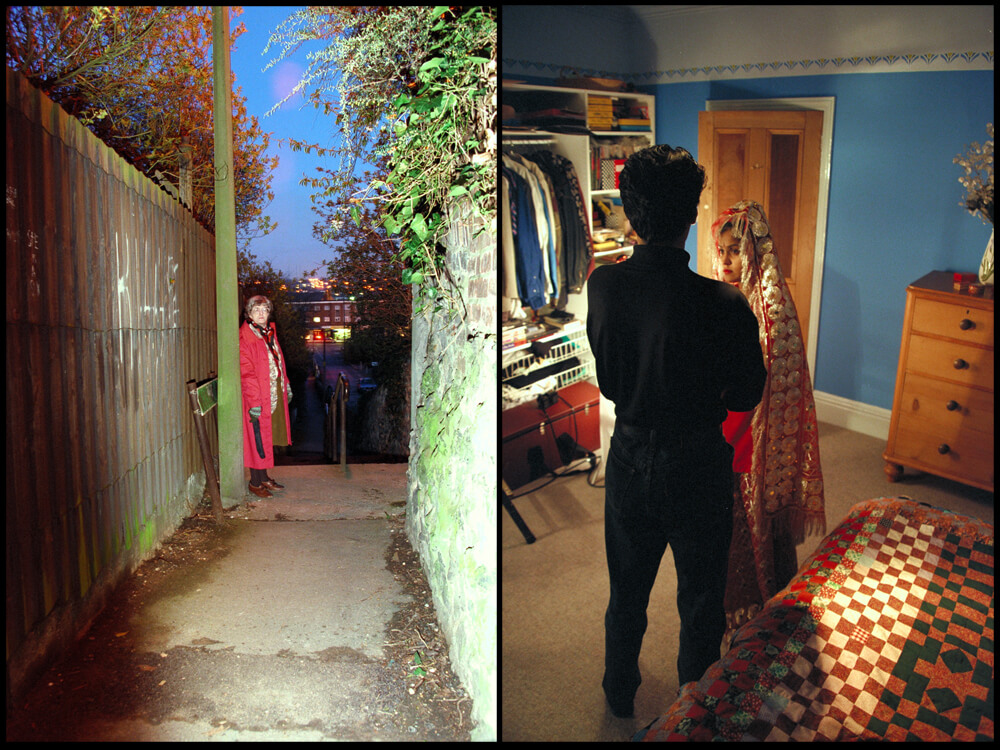
Images from some of the original photo-sessions.
An Open Day was organised in April, to which all participants were invited, to approve the use of the individual pictures in the context of the exhibition, and were invited to comment on both design and text. A recent court case where a judge made the comment ‘She’s no angel’ of a pre-teen who was raped by her babysitter caused much debate and was selected for one of the panels. The response was enthusiastic and final work was undertaken in July with graphic designer Sakab Bashir. The exhibition launched in October. The launch was attended by actors and actresses from the Channel 4 soap ‘Brookside’, which was then running a storyline about sexual abuse. It toured for over 12 months to diverse settings, from Annual General Meetings of tenants groups to Trade Union events. A postcard was produced of one of the most ‘popular’ images – ‘It’s only slap and tickle’ – and was widely distributed. The exhibition received extensive press coverage – and succeeded in creating a little controversy.
